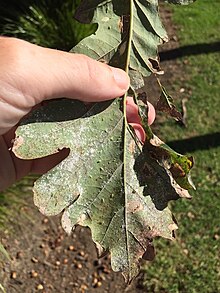| Microstromatales | |
|---|---|
 | |
| Microstroma album | |
| Scientific classification | |
| Domain: | Eukaryota |
| Kingdom: | Fungi |
| Division: | Basidiomycota |
| Class: | Exobasidiomycetes |
| Order: | Microstromatales R.Bauer & Oberw. (1997) [1] |
| Families | |
The Microstromatales are order of fungi in the class Exobasidiomycetes. [2] [3] [4] The order consists of three families: the Microstromataceae, the Quambalariaceae, and the Volvocisporiaceae.